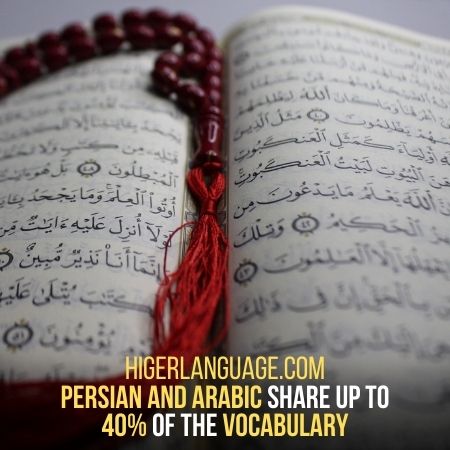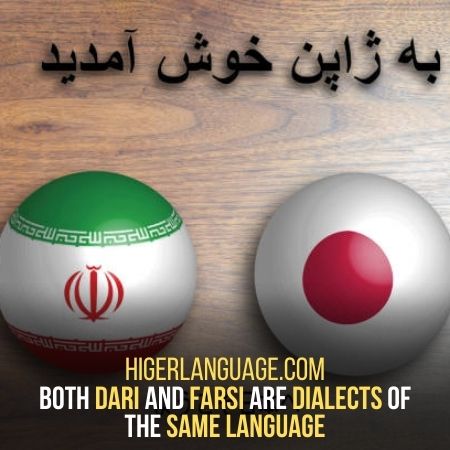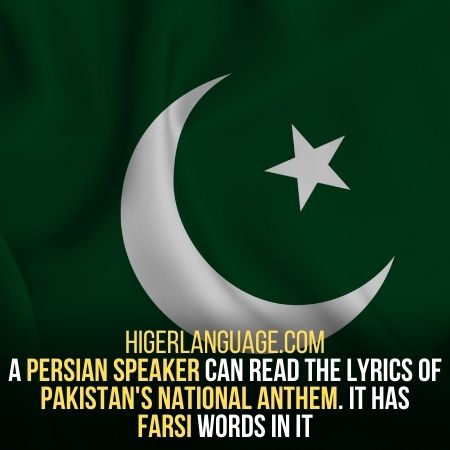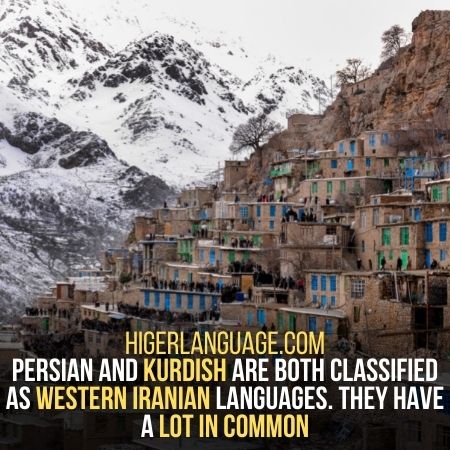Farsi, most commonly known as Persian, belongs to the Indo-European language family.
There are some languages similar to Farsi in this family.
There are different criteria for determining the extent of similarity among these languages.
Let’s get deep into it.
Top 5 Languages Similar To Farsi/Persian
The most similar languages to Farsi/Persian are;
– Arabic
– Dari
– Urdu
– Kurdish
– English
We’ll discuss these languages one by one to have detailed information.
1. Arabic – Number One Language Similar To Farsi/Persian:
In North Africa, the Middle East, and Central Asia, Persian and Arabic are the main spoken languages.
They have evolved in the same region for years, so one might expect them to seem similar at first glance.
They share some characteristics, particularly vocabulary.
Vocabulary:
There has been swiping on both sides about the vocabulary.
However, Persian borrowed much more from Arabic than Arabic borrowed from Persian.
This is due to the decades spent in Persian-speaking territories under Arab domination.
It has borrowed many words and used them in daily speech.

They share up to 40% of the vocabulary.
Among the many loan words in Persian are Ahsas (feeling), Vaght (time), and Sabur (patience).
Barnaamaj (schedule), Shatranj (chess), and Bis (only) are some Persian borrowings in Arabic.
Pronunciation:
Persian and Arabic share certain similarities in terms of sound. But, they also have a lot of differences.
They have the same script in general.
But, Persian does not have many Arabic sounds, so the pronunciations are different.
Persian also contains extra letters for sounds that Arabic does not have.
A character for the English P (پ), G (گ) (as in “goat”), CH (چ), and a sound similar to the S (ژ) in “leisure” are among them.
Sentence Structure:
On the other hand, grammar is where the languages differ the most.
In Fusha, the word order is V-S-O, while in most dialects, it is S-V-O.
Persian, on the other hand, is an S-O-V language.
This illustrates the structure of the preceding sentences:
In Persian, all nouns must come before the verb.
But, in Arabic, the verb comes before the first or between the nouns.
This way you will know languages similar to Farsi.
Grammar:
There are certain grammatical similarities between the two languages.
They both feature adjectives following nouns and a similar pattern.
This is usually known as idaafa or ezafe, respectively.
This structure in Arabic connects two nouns with the genitive case’s final noun.
This structure, which uses a -e (written or unwritten), links a noun with another noun or adjective in Persian.
Furthermore, both languages include suffixed pronouns at the end.
This shows the object of the sentence or shows possession.
These endings are a must in Arabic. But in Persian, the ezafe structure or free pronouns can be used instead.
2. Dari – A Different Dialect Of The Same Language:
Both Dari and Farsi are dialects of the same language.
Except for local accents, they’re understandable.
They share a lot of the same syntax and have similar formal forms.
Iranians call their language Farsi.
It depends on who you question in Afghanistan. Dari is the official name for the language.
Anyhow, the reasons for this are political.
Since 1958, Farsi has been known in Afghanistan as Dari.
Many Persian speakers in Afghanistan prefer Farsi and use it.

They claim that the dominant Pashtun ethnic group imposed the term Dari on them.
They attempted to remove Afghans from their linguistic, cultural, and historical connections.
These connections refer to the Persian-speaking regions, including Tajikistan and Iran.
Vocabulary:
Farsi in Iran borrows a lot of language from French. Dari has borrowed a lot of words from English.
Both languages feature a combination of Arabic and Farsi terms.
These terms are frequently used for the same things. But they also use other Arabic words at times.
It helps you to know languages similar to Farsi.
Grammar:
The grammar is almost the same in formal Farsi and Dari.
It indicates many similarities between the two languages.
Farsi and Dari alter pronunciation and conjugation in several ways in spoken form.
There is some overlap in the way they do it.
Pronunciation:
The accents in Farsi and Dari are different.
The Arabic “w” pronunciation of vaav/waaw (و) is the same in Dari. In Farsi its pronunciation is “v.”
Dari pronounces qaaf (ق) as a harsh “q.”
Farsi pronounces it as the “gh” in ghayn (غ). Dari also avoids consonants that are close together.
3. Urdu – Among The Languages Similar To Farsi:
Persian and Urdu are both Indo-European languages, Indo-Iranian. As a result, they have links to each other.
They do, however, belong to two distinct branches of the Indo-Iranian language family.
Urdu is an Indic / Indo-Aryan language. It relates to Bengali, Nepali, and Marathi, among others.
Persian Is An Iranian Language:
It is more closely related to Pashto, Kurdish, and Balochi than other Iranian languages.
In any case, these two languages can have a comparison.
It’s also characterized as “Persianized” Hindustani.
This is because Hindi contains more Sanskrit-derived vocabulary (a few Persian words).
The Mughals, for example, ruled the subcontinent with Persian as the official language.
Urdu was the elite language at that time.
Because of their frequent contact, Urdu picked up words from Persian.
The vocabularies are very similar.
Even at an everyday level, many Persian loanwords emerge in Urdu.
Some Urdu literature works are so similar to Persian that you can read them if you know Persian.

An Iranian, for example, can read the lyrics of Pakistan’s national anthem.
It’s grammatically highly different. Generally, Urdu is more difficult to grasp than Persian.
The most significant distinction between Persian and Urdu is in their verb origins.
Urdu retains many of the Indo-Aryan Prakrit verb roots, but Persian is an Iranian language.
Both languages use a modified version of the Arabic script.
Urdu uses a lot of Persian words. But they all have different pronunciations and meanings.
Many words in Urdu belong to Farsi. The script in both languages is the same in its written form.
4. Kurdish – From Western Iranian languages Similar To Farsi:
The Kurdish language is the most spoken in the Kurdistan region.
It includes Iran, Iraq, Turkey, and Syria. Kurmanji is also a Kurdish dialect spoken in northeast Iran.
In terms of social links and language affinities, they have pretty similar origins.
The Aryan people primarily spoke both languages.
They belong to Zagros and Iranian family languages.
Both Aryan race individuals spoke Farsi and Kurdish as their native languages.
Persian and Kurdish are both classified as Western Iranian languages.
This means they are very much related and have a lot in common.
The languages are very similar on a basic level.
The numbers are the same in both languages. Very simple sentences are nearly mutually comprehensible.

Grammar is the same (depending on dialect). Incredible amounts of common vocabulary are also there.
Some Basic sentences are:
|
English |
Kurmanji |
Sorani |
Persian |
| What’s your name? | Nāvē te čī e? |
– |
Nāme to čī e? |
| He saw me | Wī ez dītim | Ew minī dīt | Ū man rā dīd |
| We are Kurdish | Em Kurd in | Ēmā Kurdīn | Mā Kordīm |
Sorani looks to be the most Persian-like of all the dialects.
If you already speak Persian, studying Kurdish will be a lot easier for you and vice versa.
5. English – Last On The List Of Languages Similar To Farsi/Persian:
Persian is among the world’s earliest written languages.
Persian, like English, has undergone many modifications during its strong history.
Both English and Persian are similar Indo-European languages.
English and Persian have a vocabulary base derived from a rebuilt ancestor language.
Linguists call it (PIE) Proto-Indo European.
Both English and Persian, like other Indo-European languages, have a history of mutual influence.
One of the simplest ways to observe these similarities is through vocabulary.
These languages share not just similar words but also grammar.
Because Farsi and English are similar languages, they may borrow some words. But many of them are identical!

Both of them are descended from Proto-Indo-European.
This is the origin of Indo-Iranian (Farsi), Germanic (English), Slavic, and Romance language families.
Some of the similar words between Farsi and English are;
|
English |
Farsi |
| Baby | Bebe |
| Better | Behtar |
| Door | Dar |
| Daughter | Dokhtar |
| Eyebrow | Aabroo |
| Jungle | Jangal |
Conclusion:
Persian is a major Middle Eastern and Central Asian language.
In Iran, it is known as Farsi, while in Afghanistan, it is known as Dari.
Above are some of the other languages similar to Farsi.
They have a lot of variations that make them stand apart.
On the other hand, their similarities make studying them much easier.
Also, studying these languages enables people from different parts of the world to communicate.
Persian was also the cultural lingua franca in South Asia until a century ago.
So, it is necessary for the understanding of that region’s history.
- Explore Some Commonly Used Slang Words For Knives - November 6, 2023
- Here Are Some Of The Slang Words For Jeep Commonly Used - November 3, 2023
- Did You Know The Commonly Used Slang Words For King? - November 3, 2023